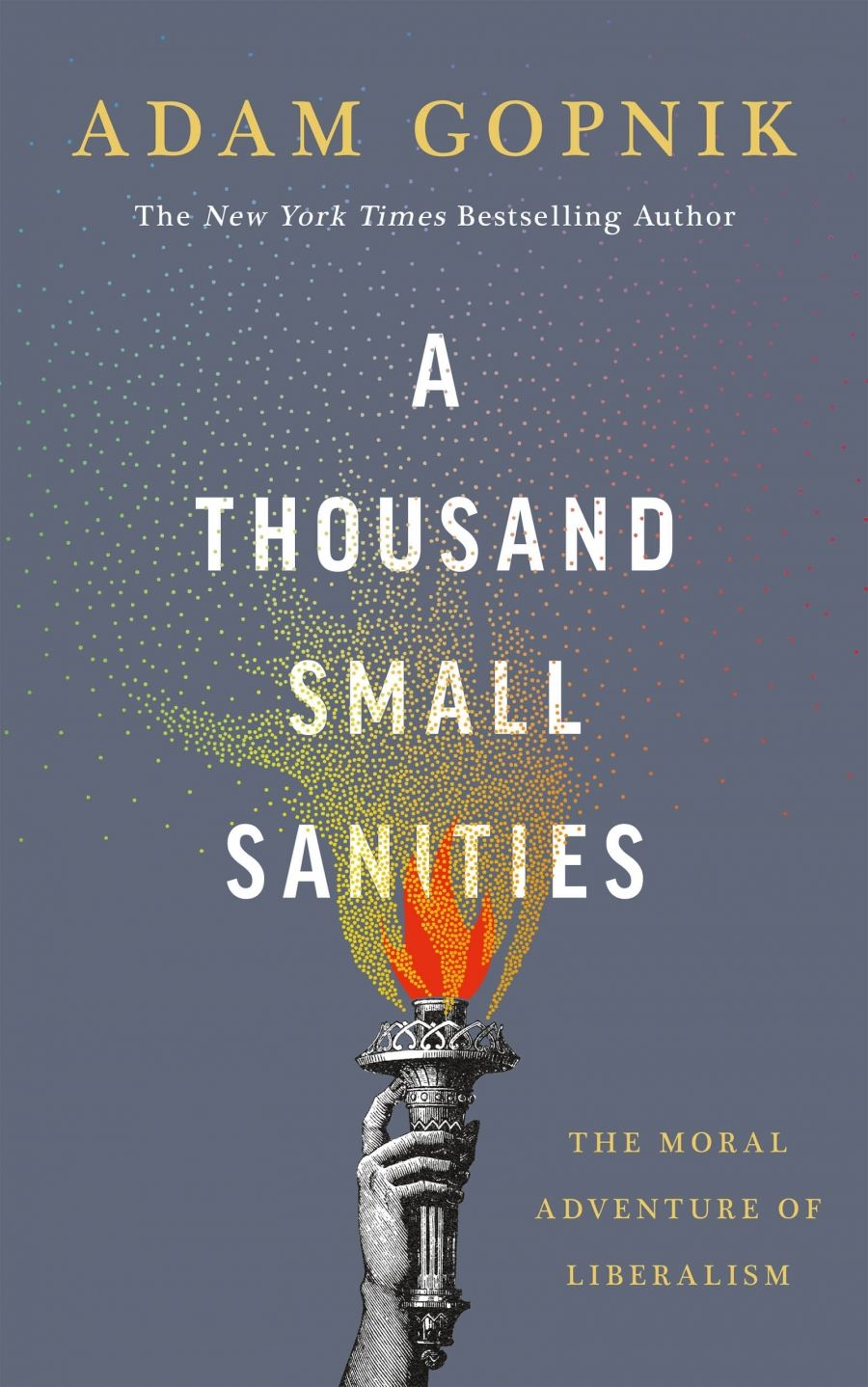
- Free Article: No
- Contents Category: Politics
- Review Article: Yes
- Custom Highlight Text:
In an era of dogmatism, polarisation, and intolerance, visible on both the right and left wings of politics, liberalism needs more love. Part of its image problem is a widespread perplexity about what values and principles it really stands for. In different times and places, liberalism has meant many different, even contradictory, things ...
- Grid Image (300px * 250px):

- Alt Tag (Grid Image): A Thousand Small Sanities
- Book 1 Title: A Thousand Small Sanities
- Book 1 Subtitle: The moral adventure of liberalism
- Book 1 Biblio: riverrun, $35 hb, 245 pp, 9781529401578
A Thousand Small Sanities is an attempt to make liberalism seem more lovable, and part of the strategy is to present us with lovable liberals. Gopnik sketches the lives and ideals of some famous liberal thinkers, including John Stuart Mill and Harriet Taylor – British liberalism’s iconic couple. As Gopnik tells their love story, Mill and Taylor seem far more passionate, less inaccessibly cerebral, than in most accounts. They are touchingly human in their hesitations, complications, and compromises. Gopnik offers a similarly sweet portrayal of Mary Ann (or Marian) Evans – who wrote as George Eliot – and her lover, George Henry Lewes.
However, some of Gopnik’s excursions into the past, and some of his pigeonholing of various historical and contemporary individuals as liberals, create a suspicion about his overall project. He co-opts for liberalism numerous people who would not usually be regarded as liberal thinkers – or at least not as exemplary liberal thinkers. Among these are Michel de Montaigne, Jürgen Habermas, and the political scientist Robert D. Putnam. Conversely, he is silent about many prime movers of liberal thought: among others, Jeremy Bentham, Benjamin Constant, Richard Cobden, John Bright, Herbert Spencer, Leonard Hobhouse, and Franklin D. Roosevelt. Montaigne, for example, influenced the rise of toleration as a social and political virtue in late-Renaissance Europe, and in that sense he can be seen as a proto-liberal or one of liberalism’s important precursors. However, liberalism appeared as a distinct political force in the early nineteenth century, more than two centuries after Montaigne’s death. (Gopnik also claims that liberalism preceded modern science, but quite the opposite is true.)
I am conscious that this might seem like quibbling. Gopnik is entitled to define liberalism however he wants, perhaps in such a way that Montaigne turns out to be a liberal, while less sympathetic figures, such as Spencer, don’t make the cut. But if we manipulate definitions until liberalism is no more than kindness, tolerance, and good-hearted scepticism, defending it becomes too easy and rather pointless. There’s more work to be done, and more intellectual profit to be had, if liberalism is understood as a specific phenomenon with an identifiable history. Liberal parties and movements arose in Europe soon after the French Revolution, and they synthesised ideas from Benthamite utilitarians, religious dissenters, Manchester economists, and supporters of the Revolution’s early ideals prior to the Terror.
Gopnik is on stronger ground when he locates the emergence of a recognisably modern, somewhat revisionist form of liberalism in the period from 1859 to 1872. This was when liberal thinkers, especially Mill, made some of their most crucial intellectual interventions. It was also when British liberalism began to soften such core doctrines as free trade and freedom of contract. This revised version of British liberalism soon became dominant within its home territory, influenced Roosevelt in the United States, manifested in the New Deal, and helped shape the American liberal tradition, with its characteristic emphasis on market interventions and social spending.
Most impressively, Gopnik includes two long chapters – the heart of the book – devoted, respectively, to right-wing and left-wing critiques of liberalism. He presents these vividly, persuasively, and at considerable length, before offering deft responses.
A Thousand Small Sanities is journalistic in style and highly accessible. It’s polemical, though in a gentle, enjoyable way, rather than analytical or systematic, and is none the worse for that. Gopnik has crafted an appealing, largely successful defence of liberalism as a live political option.



Comments powered by CComment